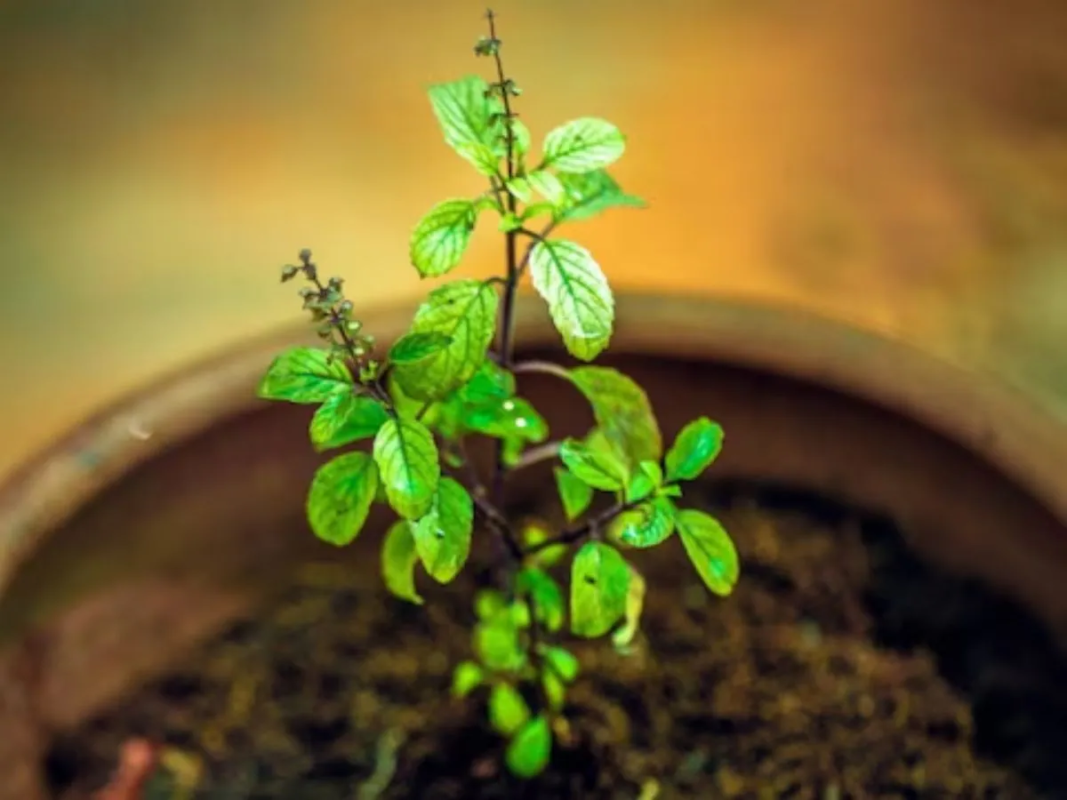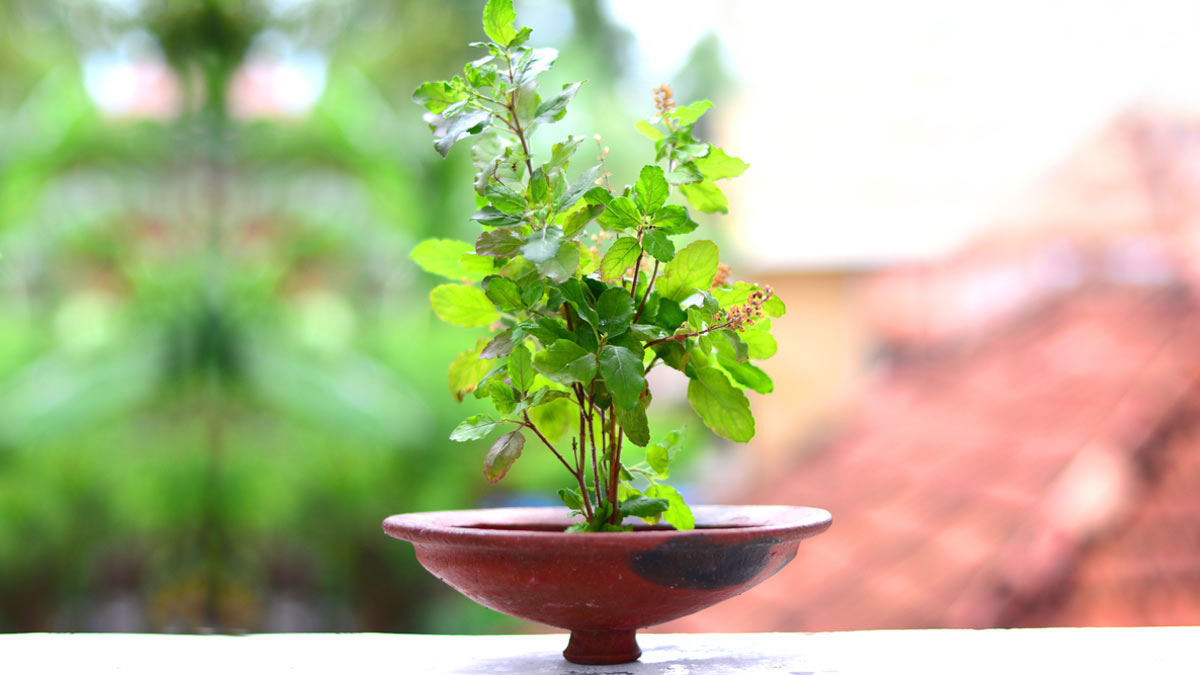Tulsi, also known as Holy Basil, holds a special place in Indian culture for its spiritual, medicinal, and environmental benefits. Beyond its traditional uses, it is a natural air purifier that contributes to maintaining ecological balance. Its ability to absorb harmful pollutants and release oxygen makes it an essential plant in modern times.
In this article, we explore Tulsi’s role in purifying air, its ecological benefits, and its different varieties of and their unique uses.
Table of Contents
How Tulsi Purifies the Air

It is often called nature’s air purifier. This is due to its exceptional ability to absorb harmful pollutants like carbon dioxide, carbon monoxide, and sulfur dioxide. It also emits oxygen and essential oils that have antibacterial and antifungal properties, improving indoor and outdoor air quality.
Oxygen Production: It releases oxygen even at night, unlike most plants that release carbon dioxide in the absence of sunlight. This makes it an ideal plant for bedrooms and offices.
Absorption of Toxins: It absorbs harmful chemicals and toxins from the air, reducing pollution and enhancing the quality of life in urban environments.
Aromatherapy Benefits: The natural fragrance of this plant soothes the mind and reduces stress, creating a calming atmosphere.
By planting this in homes and public spaces, we can naturally combat air pollution and create healthier living environments.
Tulsi and Ecological Balance

This plant plays a crucial role in maintaining ecological balance by supporting biodiversity and contributing to the ecosystem.
Soil Health: It helps improve soil fertility by preventing erosion and replenishing nutrients in the soil.
Carbon Sequestration: By absorbing carbon dioxide, it aids in reducing the greenhouse effect, helping to mitigate climate change.
Water Conservation: Tulsi’s deep roots help in conserving water by retaining moisture in the soil, which is particularly beneficial in arid regions.
Different Varieties of This Plant and Their Unique Uses
This plant comes in several varieties, each with its own distinctive characteristics and benefits. The most commonly known types are Krishna Tulsi, Rama Tulsi, and Vana Tulsi.
1. Krishna Tul si (Shyama Tulsi)
Appearance: Krishna Tul si has dark purple leaves and stems, giving it a striking appearance.
Uses:
Widely used in Ayurvedic medicines for respiratory issues and skin conditions.
Known for its strong flavor, making it a popular ingredient in herbal teas.
2. Rama Tul si (Lakshmi Tulsi)
Appearance: Rama Tul si has bright green leaves and is the most commonly found variety in Indian households.
Uses:
Excellent for boosting immunity and reducing stress.
Used in home remedies for cold, fever, and digestive problems.
3. Vana Tul si (Wild Tulsi)
Appearance: This variety is taller and grows in the wild, with larger green leaves.
Uses:
Primarily used for its antibacterial and antioxidant properties.
Found in natural supplements and health drinks.
Why This Plant Deserves a Place in Every Home

In addition to its air-purifying and ecological benefits, it offers countless practical uses in daily life:
Herbal Teas: Its tea boosts immunity, reduces stress, and promotes relaxation.
Medicinal Benefits: It is a go-to remedy for common ailments like cough, cold, and headaches.
Natural Pesticide: Its extracts can be used as an organic pesticide to protect crops and plants from pests.
Cultural Significance: It is worshipped in Indian households and is considered a symbol of purity and positivity.
It is more than just a sacred plant; it is an ecological asset and a natural solution to modern-day environmental challenges. From purifying the air and improving biodiversity to providing health benefits, it plays a multifaceted role in enhancing both the environment and human well-being.
If you are looking to buy authentic, premium and aromatic incense, or hawan cups for your daily puja rituals, consider buying our products by clicking this link.







